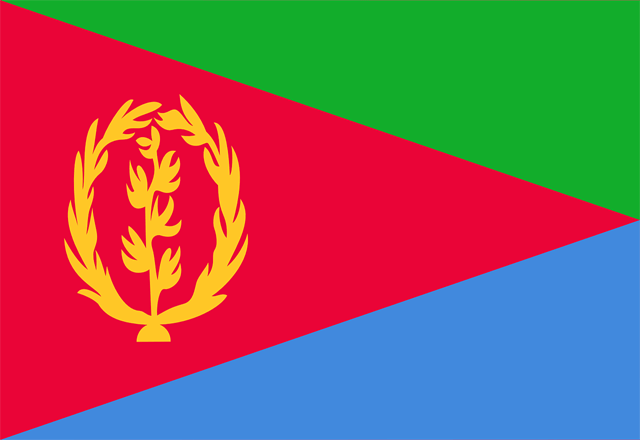Eritrea has a different place in the geography of the world. There are many such things in this country that separate this country from other countries such as language, living style, dress, culture, religion, business. Let us know about some such unique facts related to the country of Eritrea and important events related to history, knowing which your knowledge will increase.
Eritrea Country Quick General Knowledge
| Country | Eritrea |
| Capital | Asmara |
| Currency | Nakfa |
| Continent | Africa |
| Group | African Union |
| Constitution | May 24, 1993 |
| National Anthem of Country | Ertra, Ertra, Ertra, (Eritrea, Eritrea, Eritrea) |
Read Also: Name of the country, their capital and currency List
- Eritrea is located in the northeast of Africa, bordering Ethiopia in the south, Djibouti in the southeast, and Sudan in the west.
- The eastern and northeast part of Eritrea has a vast coastline of the Red Sea lined by Saudi Arabia and Yemen and its parts are the Dhalak Islands and the Hanisch Islands.
- Eritrea was the colony of Italy and Ethiopia of Europe which gained independence from Italy on November 1941 (formal) from Ethiopia on 24 May 1991 and from Ethiopia (duly) on 24 May 1993.
- The total area of Eritrea is 117,600 sq km. (45,405 sq mi).
- According to the World Bank, Irritia had a total population of 4.475 million in 2011.
- The population of Eritrea is equally divided between Christian and Muslim religions.
- Eritrea is a multilingual country with no official language, but the recognized national languages are Tigrinya, Arabic, Tigray, Kunama, Saho, Bilen, and the working languages are Tigrinya, Arabic and English.
- The name of Eritrea's currency is Naqfa.
- The highest mountain in Eritrea is Emba Soira, which is 3,018 meters (9,90 ft) above sea level.
- There have been two civil wars in Irritia till now, the first civil war from 1972 to 1974 and the second civil war from 1980 to 1981.
- The national animal of Eritrea is the Arabian camel.
- Eritrea officially adopted the flag on May 24, 1993, with the color red as the blood of the freedom struggle, the green color as agriculture and livestock, the blue as the Red Sea, and the olive tree as a symbol of peace and prosperity.
- 05 February 1941 - Second World War-British and Free French forces began the Battle of Keren to capture the strategic town of Keren in Italian Eritrea.
- 17 March 1988 - Eritrean War of Independence-The Eritrean People's LiberationFront encircled an Ethiopian force and gained a decisive victory in theBattle of Afabet.
- 24 May 1993 - Eritrea gained her freedom from Ethiopia. After the United Nations supervision referendum in Eritrea, in which the people of Eritrea voted heavy for independence, Eritrea declared her independence and gained international recognition.
Definition of international border: L = Land Border | M = Maritime Border
Eritrea FAQs:
The capital of Eritrea is Asmara.
The currency of Eritrea is Nakfa.
Eritrea is the part of Africa continent.
The languages spoken in Eritrea are Afar, Arabic, Tigre and Kunama, Tigrinya, other Cushitic languages.
The national anthem of Eritrea is "Ertra, Ertra, Ertra, (Eritrea, Eritrea, Eritrea)".
Eritrea country part of the African Union like large International groups.
Eritrea country founded on May 24, 1993.

